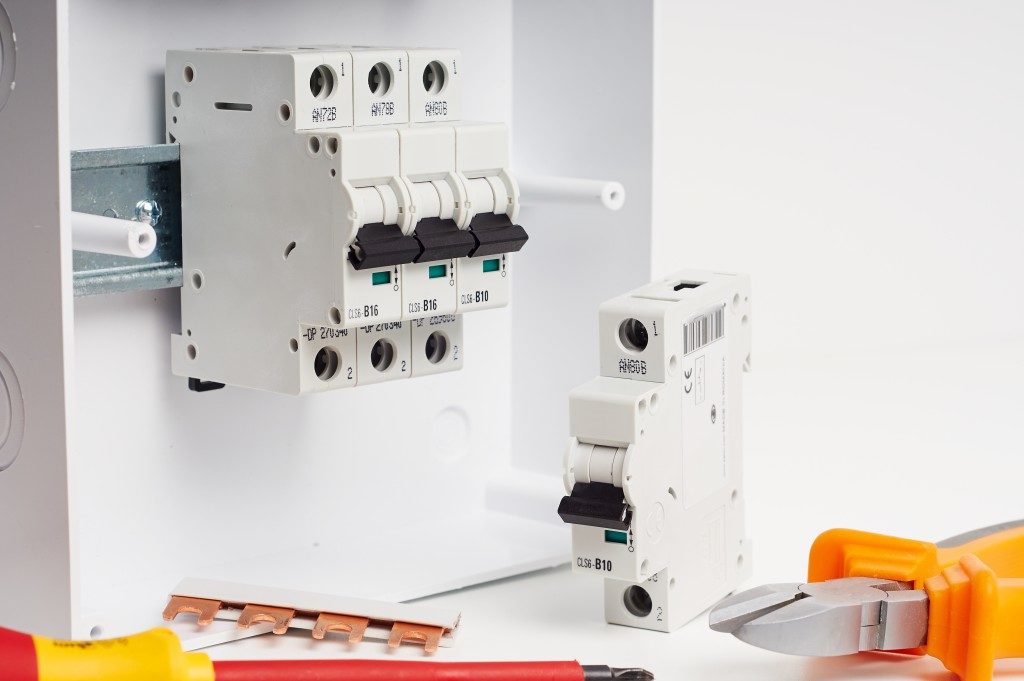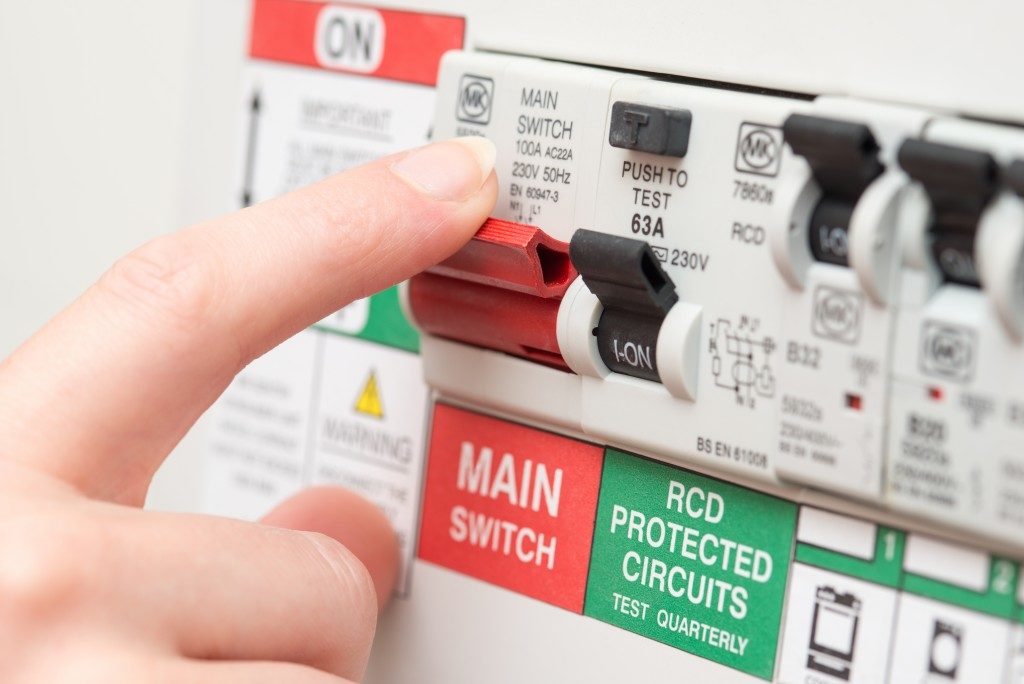Circuit breakers are one of the most common electrical devices found in residential areas. They are mainly installed to protect our electrical system from damages in the event of an overload, overcurrent, or a short-circuit. These are composed of five key components. Learning about these key components are essential in understanding the operations of a circuit breaker.
Key components
The Frame. The frame is made up of an insulating material such as resin or glass-polyester. It serves as the case or housing that holds together all the other parts.
The Operating Mechanism. The operating mechanism is the part that enables the circuit breaker to open and close the contacts. Its handle moves through a toggle mechanism and indicates whether the breaker is turned on or off.
Interrupting Structure. This part of the breaker is composed of arc chutes, steel plates, and other current-carrying parts. Arc is a discharge of electric current that crosses a gap between contacts. One of the essential parts of the interrupting structure is its arc extinguisher. It is made up of insulated plates that extinguish arcs by confining and separating the arcs.
Trip Unit. This structure is responsible for tripping the operating mechanism in the event of a short circuit and current overload. It has thermally-sensitive and current-sensitive electro-magnetic devices that monitor and sense abnormality in the current system.
Terminal Connections. Terminal Connections provides a safe linkage between the circuit breaker and the conductor.
As you are now familiar with the parts of a circuit breaker, you have a clearer vision of how the breaker operates. It is important to note, however, that all of the parts of the circuit breaker are upgradeable and replaceable. Fortunately, replacing parts is not complicated. Specialty electronic parts are available and for sale online. With a variety of materials available in the market, you can choose parts with optimum capacity and durability.
What happens when your circuit overloads?
All electrical circuits come with a designated load of energy to carry. When our consumption is higher than the designated limit, circuit overload happens. If our electrical wiring carries too much load, it will generate heat until it eventually melts and starts a fire. Fortunately, the breaker can sense the overload before anything terrible happens. In case of overload, the breaker will immediately trip, thereby shutting off the power of the entire electrical circuit.
How do you fix a circuit breaker that trips?

A tripping circuit breaker is typical, especially when multiple appliances are used at the same time. However, fixing this is easy with the following steps.
First of all, you have to turn off lights and unplug all electrical devices. This is necessary to ensure that overload will not happen again. Next, you have to locate your circuit breakers. Open the case and look for the breaker that has moved from on to the off position, or halfway in between. Turn the lever to the on position to restore the power. Afterward, test your breaker by plugging your electrical devices one by one. If it loses power once again, that means that your circuit is carrying more load than what it can handle. In this case, you either have to upgrade your circuit breaker or move the connection of your other appliances to other circuits.
Please remember that if your power is not restored, you may have to ask for the help of a professional electrician to inspect your electrical system.
Always remember that handling electrical devices requires utmost caution. Look for signs of smoke or fire in case your power trips. Do not operate the circuit breaker when you have wet body parts or when you are on a damp surface. Moreover, you may opt to wear protective and or insulator gloves when working.
